Zosui is a comforting Japanese rice soup cooked in a savory dashi broth with vegetables, eggs, mushrooms, and sometimes chicken. It‘s a mild and nourishing meal that helps refuel your energy. With pantry-ready ingredients, you can easily make it in no time! {Vegan-friendly}
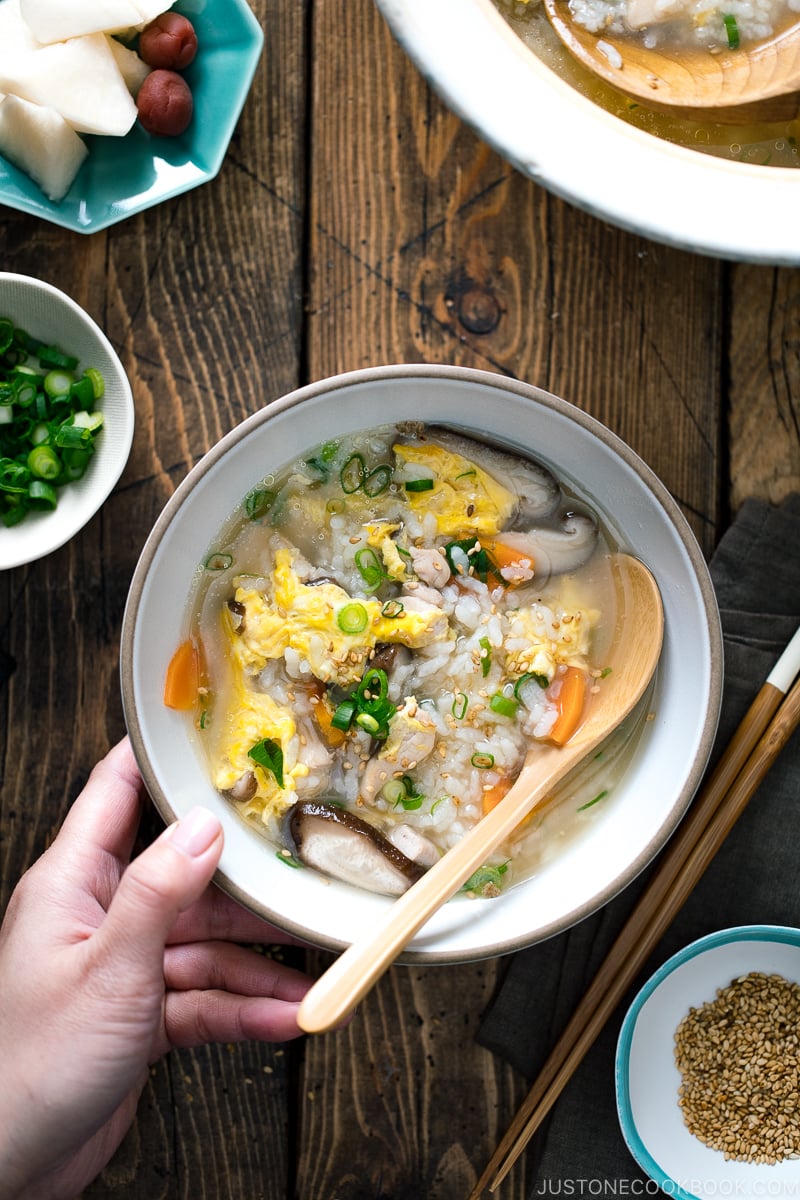
Regardless of the season, I always welcome a comforting, healthy soup. If you’re like me, this Japanese Rice Soup called Zosui (雑炊) is for you!
You’ll need only minimal ingredients, which can be any leftover scraps of vegetables or mushrooms in the refrigerator. Ready in less than 30 minutes, this bowl of warm rice soup will instantly reenergize and restore your energy.
Table of Contents
What is Zosui?
Zōsui (雑炊) is a Japanese rice soup made from pre-cooked rice and dashi broth that’s seasoned with soy sauce. Some may describe it as the Japanese version of congee, except Zosui is more robust in texture. The rice grains are intact while submerged in the soup broth.
It is generally served to those who are sick or under the weather. Therefore, Zosui is often cooked with simple and easy-to-digest ingredients, such as a small amount of vegetables, mushrooms, and eggs.
If you want to make it more hearty, you can add protein like meat and seafood as I did in this recipe. It can also be totally vegan by using kombu dashi and vegan-friendly ingredients.
Zosui is not a common restaurant menu, but some places offer it at the end of a hot pot meal as an option. The restaurant staff will make it right at the table by reusing leftover soup from the hot pot. It’s an instant fill-me-up kind of dish.
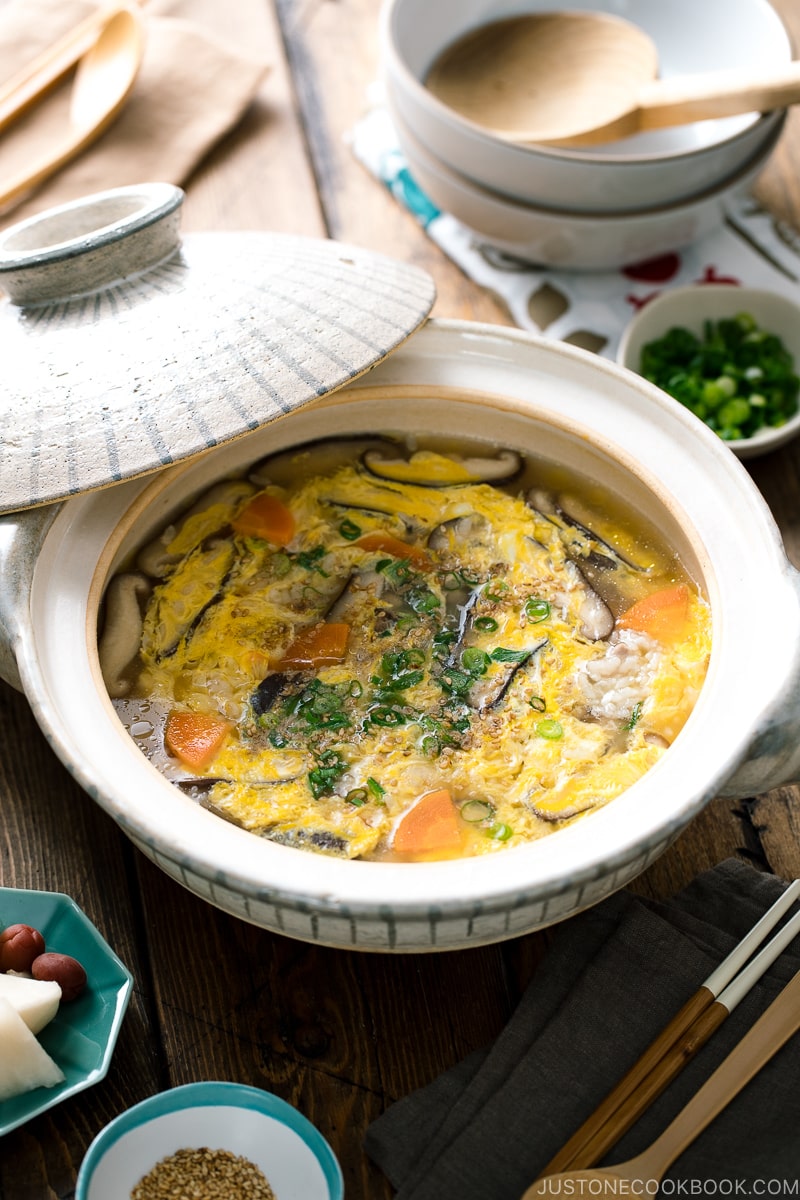
What is the Difference between Zosui vs. Ojiya?
If you’re familiar with Japanese food, you may have heard of Ojiya (おじや), another popular rice-based soup during the cold season.
Since rice is simmered in a dashi broth in both dishes, Zosui and Ojiya have a lot in common.
Many people use the words Ojiya and Zosui interchangeably, and the usage varies by region and household. However, there are some common differences between them:
Zosui (雑炊)
- Cooked rice is rinsed under water first to remove excess starch.
- It does not get cooked too long so the shape of the rice is retained.
- The broth is seasoned only with soy sauce.
Ojiya (おじや)
- Rice is never rinsed.
- Ojiya can be cooked for a longer time and the rice can be mushy (and no visible shape of the rice).
- The broth is seasoned with miso or soy sauce, but not overly flavored.
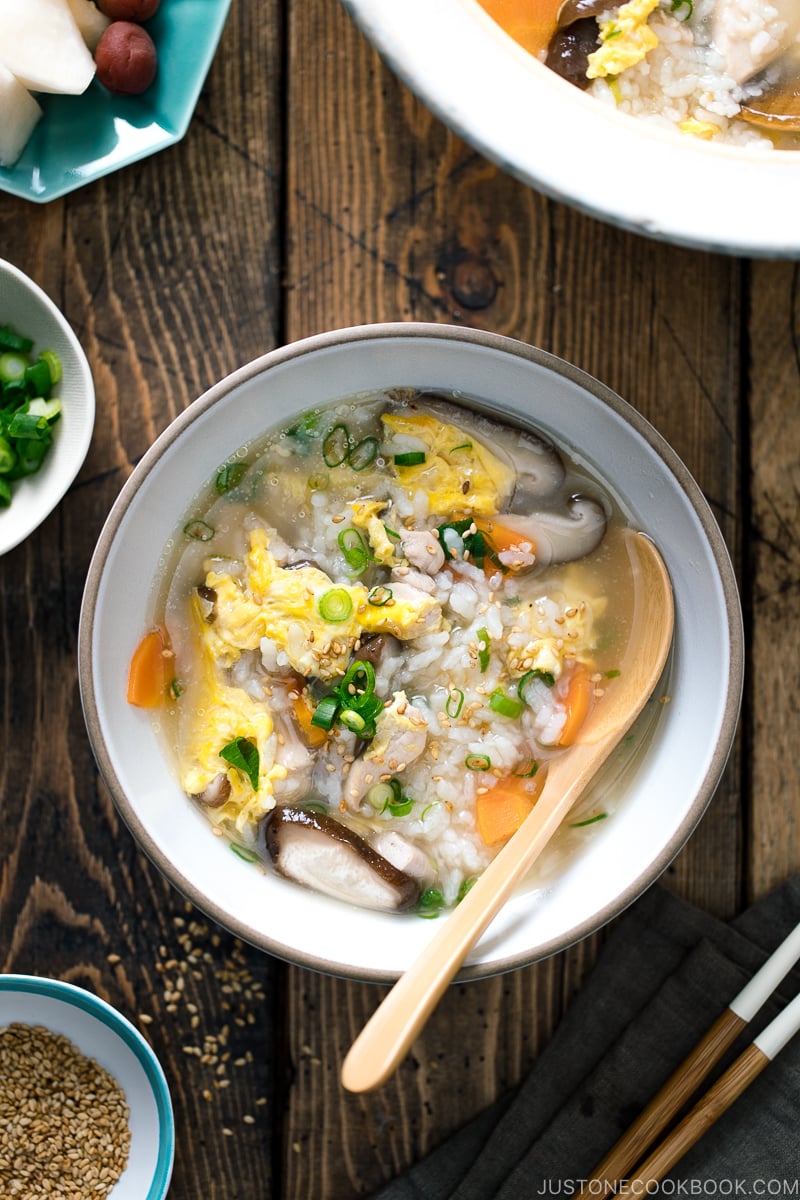
Ingredients for Japanese Rice Soup
- Dashi broth – Unlike chicken broth or vegetable broth, dashi can be made pretty quickly, even from scratch. In this recipe, I used a dashi packet, which makes it even easier but tastes a lot better than an instant dashi powder. And if you happen to have some leftover hot pot broth, you can definitely use it to make Zosui.
- Vegetables – I used green onions and carrots today.
- Mushrooms – I used shiitake mushrooms.
- Eggs
- Chicken or whatever that’s available in your refrigerator.
- Cooked rice – Most Japanese keep the leftover rice frozen, and here’s how to store cooked rice.
How to Make the Best Zosui
- Make dashi.
- Cut all the ingredients and rinse the cooked rice.
- Start cooking chicken, followed by dense vegetables, mushrooms, and rice.
- Once everything is cooked through, drizzle eggs and sprinkle green onions.
- Serve warm!
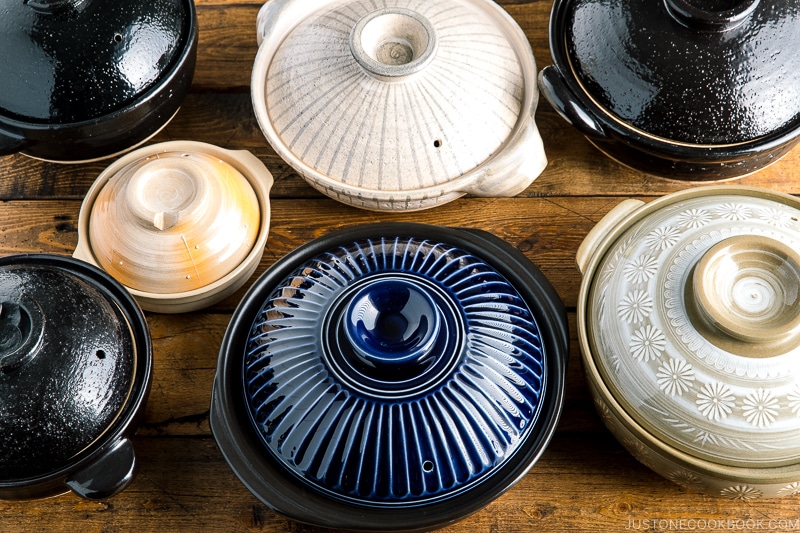
Vegan-Friendly Zosui Ingredients
Zosui is super flexible and easily customizable, and you can make it any way you like. You can use any veggies, but here are some additions for vegan/vegetarian zosui:
- Tofu – silken tofu, aburaage (fried tofu pouch), or atsuage (thick fried tofu)
- Japanese mushrooms – shiitake, shimeji, maitake, enoki, king oyster
- Vegan-friendly kimchi
- Umeboshi
- Natto
- Wakame seaweed
- Shredded nori (kizami nori)
- Soy milk – this makes the dish tonyuu zosui (豆乳雑炊). It has a creamy and sweet flavor and makes a delicious rendition for vegans or vegetarians.
Believe it or not, this Japanese Rice Soup takes less than 30 minutes to cook! It’s not only warm and delicious, but it’s also full of nutrition to give us the strength to recover from sicknesses.
Other Comforting Rice Dishes
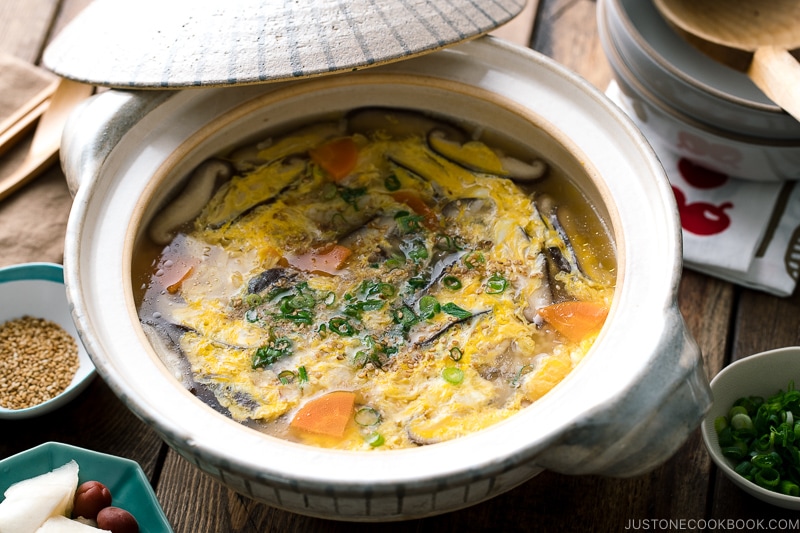
Wish to learn more about Japanese cooking? Sign up for our free newsletter to receive cooking tips & recipe updates! And stay in touch with me on Facebook, Pinterest, YouTube, and Instagram.
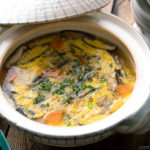
Zosui (Japanese Rice Soup)
Video
Ingredients
For the Broth
- 3 cups dashi (Japanese soup stock) (use standard Awase Dashi, dashi packet or powder, or Vegan Dashi)
- 2 tsp usukuchi (light-colored) soy sauce (or regular soy sauce)
- ½ tsp Diamond Crystal kosher salt
For the Zosui
- 6 oz boneless, skinless chicken thighs (about 1–2 pieces; skip for vegan/vegetarian)
- 1 inch carrot (1.4 oz, 40 g)
- 2 shiitake mushrooms (2.8 oz, 80 g)
- 2 green onions/scallions
- 1½ cups cooked Japanese short-grain rice (10.6 oz; cold, pre-cooked rice works well; or use freshly made)
- 1 large egg (50 g each w/o shell) (skip for vegan)
- ½ tsp toasted white sesame seeds
- ⅛ tsp white pepper powder
Instructions
- Before You Start: For the steamed rice, please note that ¾ cup (150 g, 1 rice cooker cup) of uncooked Japanese short-grain rice yields 2¼ US cups (330 g) of cooked white rice. See how to cook short-grain rice with a rice cooker, pot over the stove, Instant Pot, or donabe. Now, gather all the ingredients.
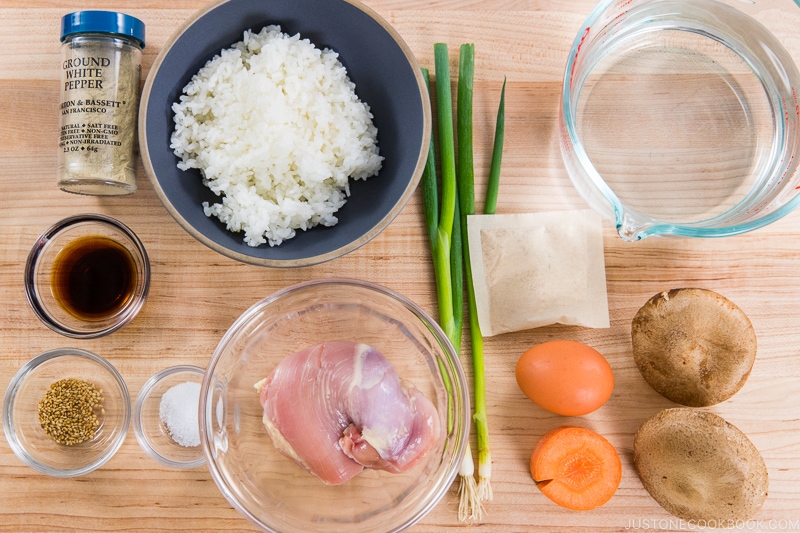
To Prepare the Dashi
- In a large pot (I used a donabe), add 3 cups dashi (Japanese soup stock). You can make Awase Dashi or Vegan Dashi from scratch or use a dashi packet, as I demonstrate here. First, add 3 cups water and 1 dashi packet to the donabe.
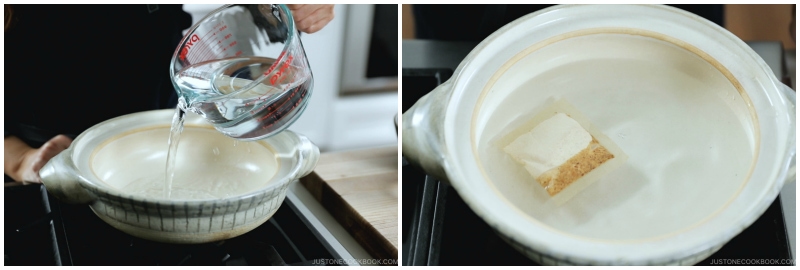
- Cover the lid and slowly bring the water to a boil on low heat. After a few minutes, open the lid and shake the bag to release more flavor.
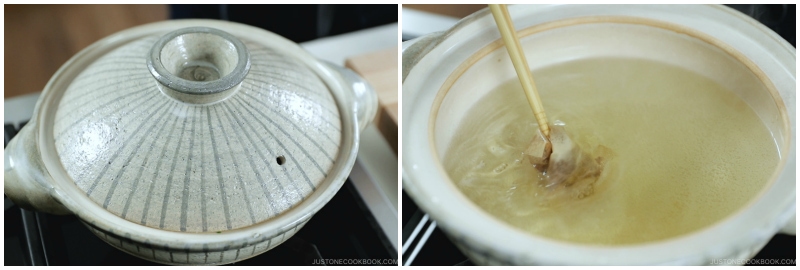
- Close the lid and continue to heat the broth. Once boiling, cook for 3 minutes and discard the dashi packet. Keep the lid closed and set aside.
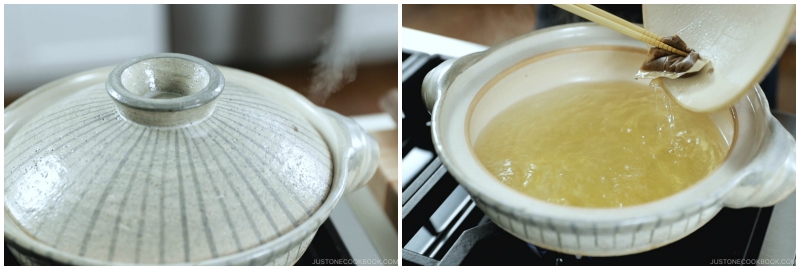
To Prepare the Ingredients
- Remove the excess fat from 6 oz boneless, skinless chicken thighs and cut the meat into small, bite-sized pieces.
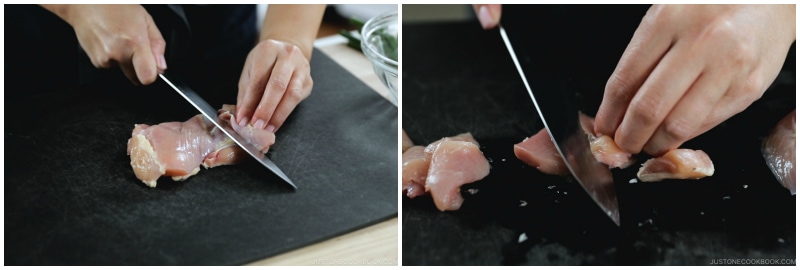
- Discard the tough stems of 2 shiitake mushrooms and thinly slice the caps.
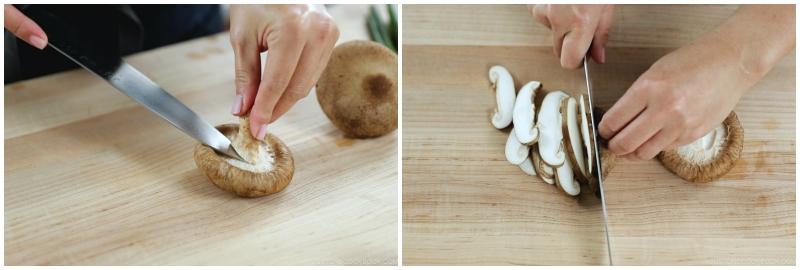
- Cut 1 inch carrot into quarters lengthwise and thinly slice them crosswise.
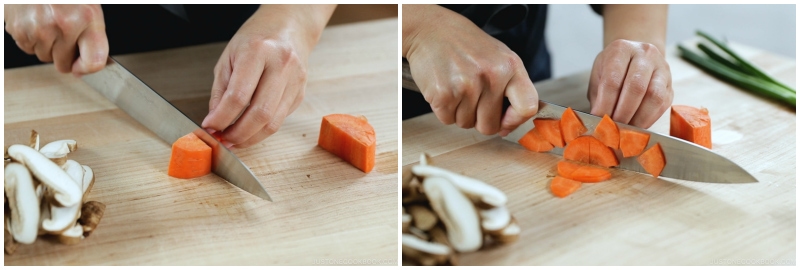
- Slice 2 green onions/scallions into thin rounds and put them in a small bowl. Set aside for garnish.
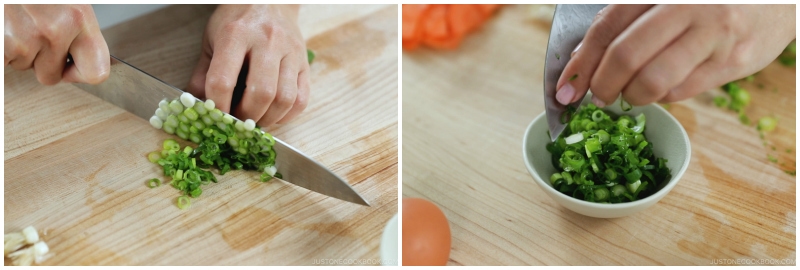
- Measure 1½ cups cooked Japanese short-grain rice. If you’re using cold pre-cooked rice, put it in a fine-mesh sieve and rinse under running water to remove any excess starch. Shake and drain well. If you’re using freshly made rice, you can skip rinsing.
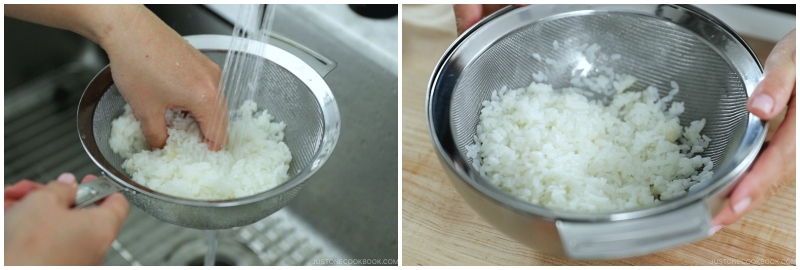
To Cook the Zosui
- To the hot dashi broth, add the chicken.
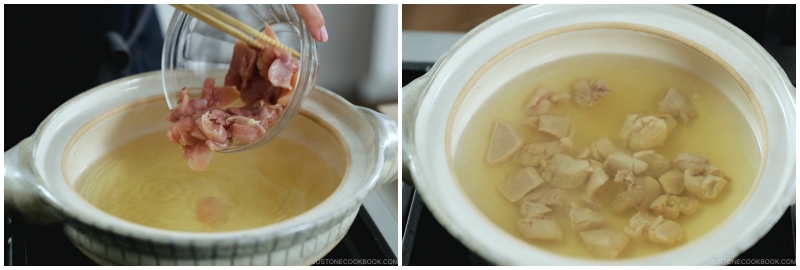
- Close the lid and bring it to a boil on medium-low heat. Once boiling, use a fine-mesh skimmer to skim the scum and foam on the surface.
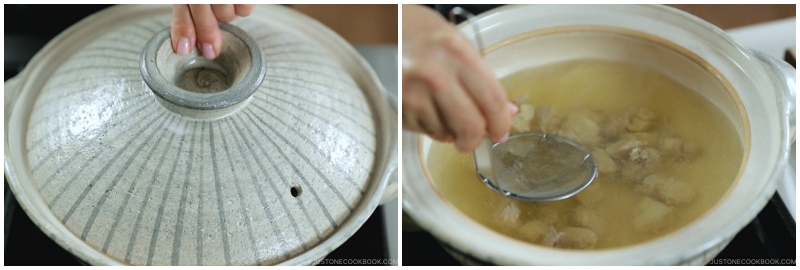
- Add the carrot and cook covered until tender, about 4–5 minutes.
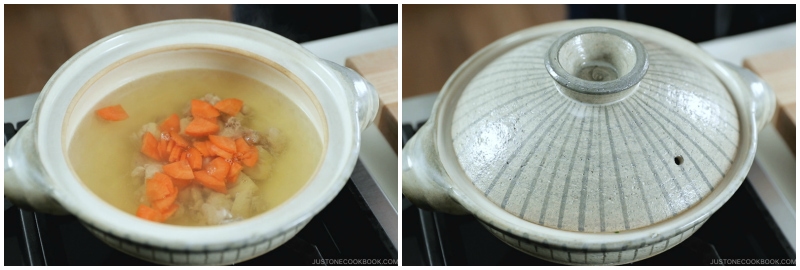
- Once the carrot is tender, add 2 tsp usukuchi (light-colored) soy sauce and ½ tsp Diamond Crystal kosher salt to the broth.
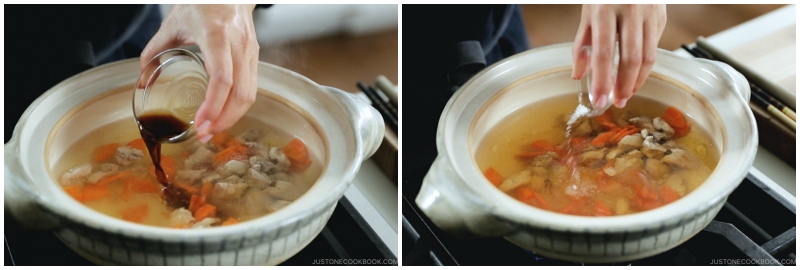
- Add the shiitake mushrooms and well-drained cooked rice. Cover to cook for 10 minutes.
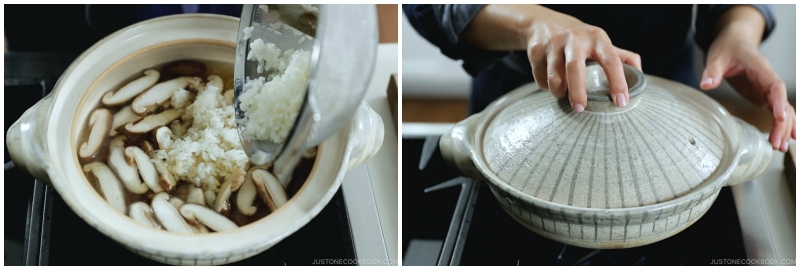
- Beat 1 large egg (50 g each w/o shell) in a bowl or a measuring cup with a pouring spout.
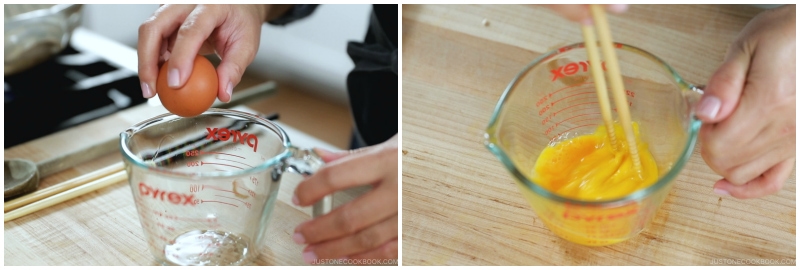
- To create fluffy egg ribbons, slowly drizzle a thin stream of the beaten egg over the soup surface in a circular pattern, starting from the center and spiraling outward. For better control, place your cooking chopstick vertically at the edge where you pour the egg. Avoid pouring the egg in the same place.
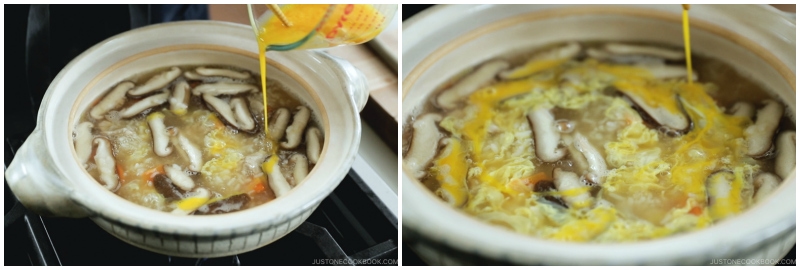
- Add some of the green onion and ½ tsp toasted white sesame seeds. Sprinkle ⅛ tsp white pepper powder at the end.
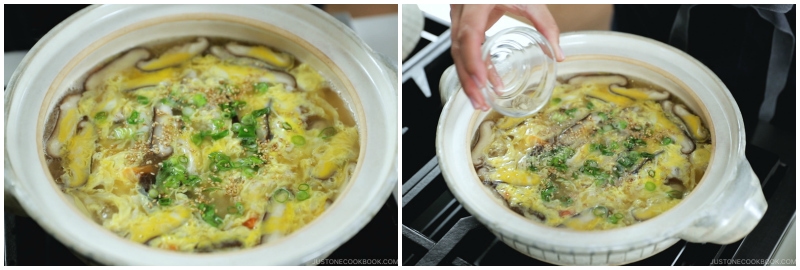
- Cover with the lid and bring the pot to the table to serve in individual bowls. Enjoy!
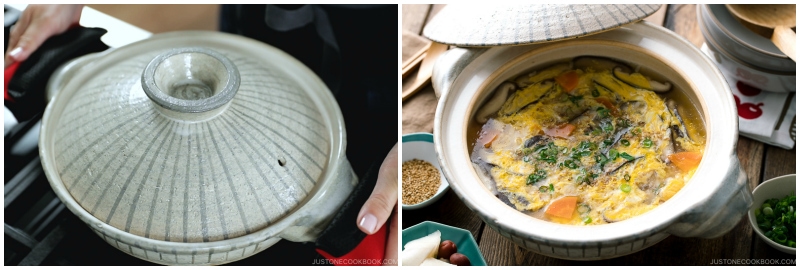
Nutrition
Editor’s Note: This post was originally published on March 5, 2020. It’s been republished in January 2022.
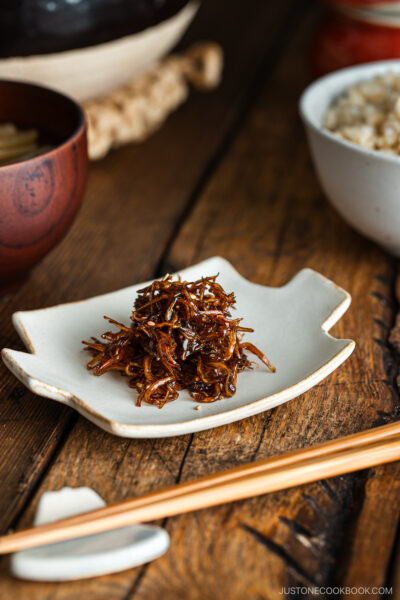
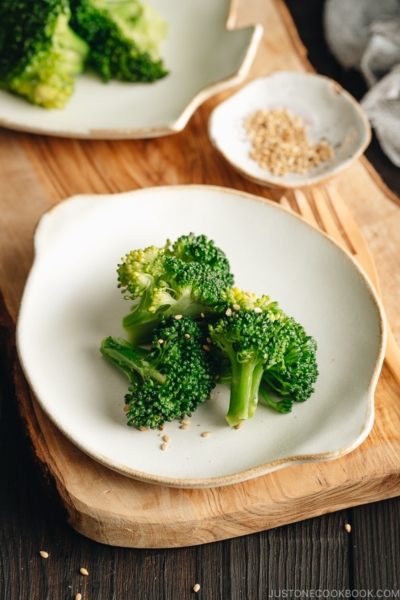
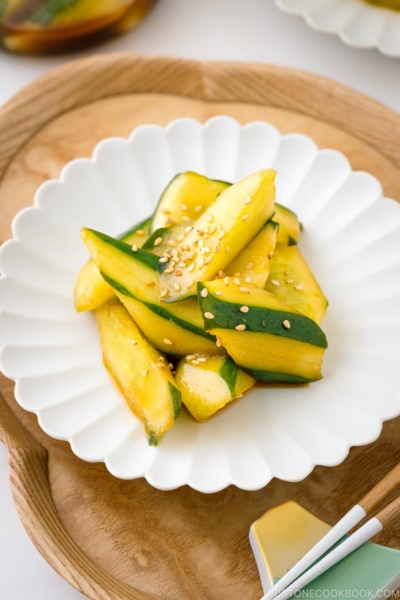
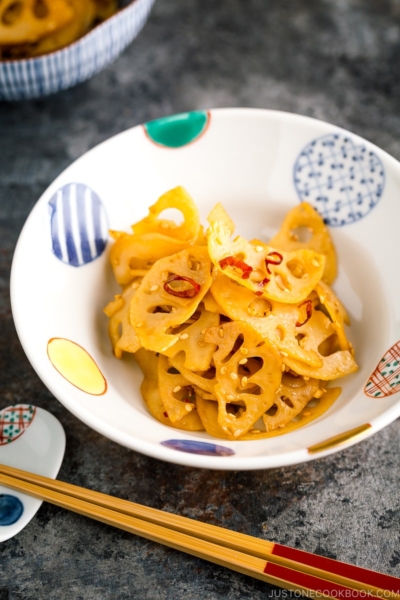
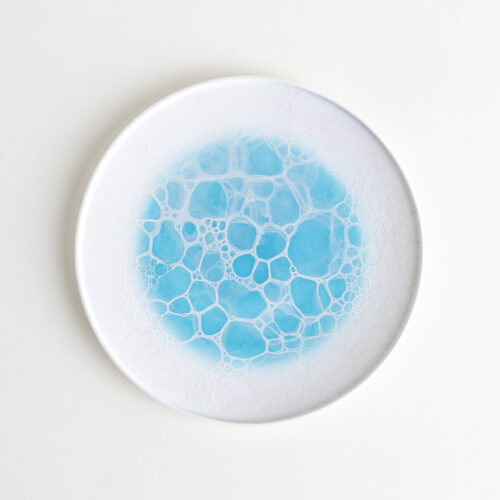
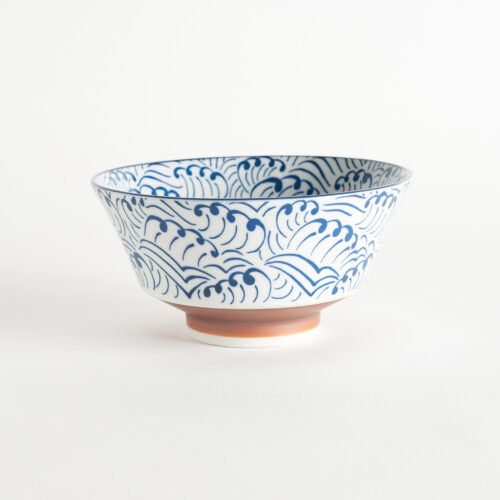
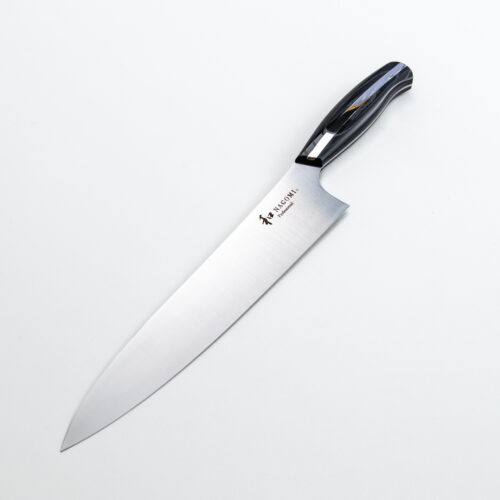
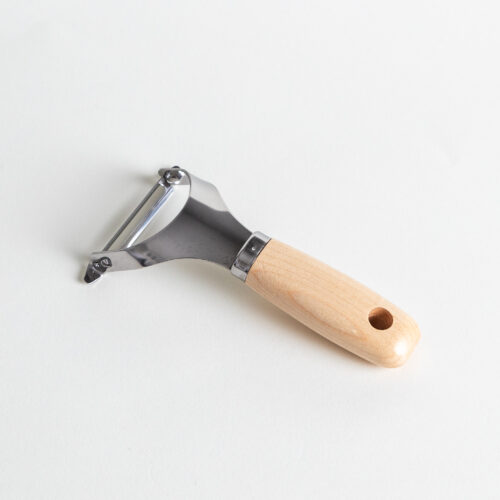
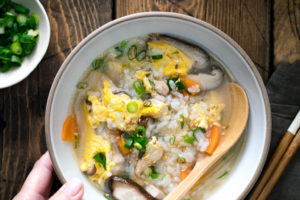
I made this recipe for my Mom and used my donabe pot for the first time. The recipe was easy to follow and the soup was filling and flavorful without being too heavy. Thank you for the easy to follow video and comforting music!
Hello, Amy. Aww. We’re happy to hear Nami’s instructions and video were helpful!
Thank you for trying her recipe and for your kind feedback. Happy cooking!